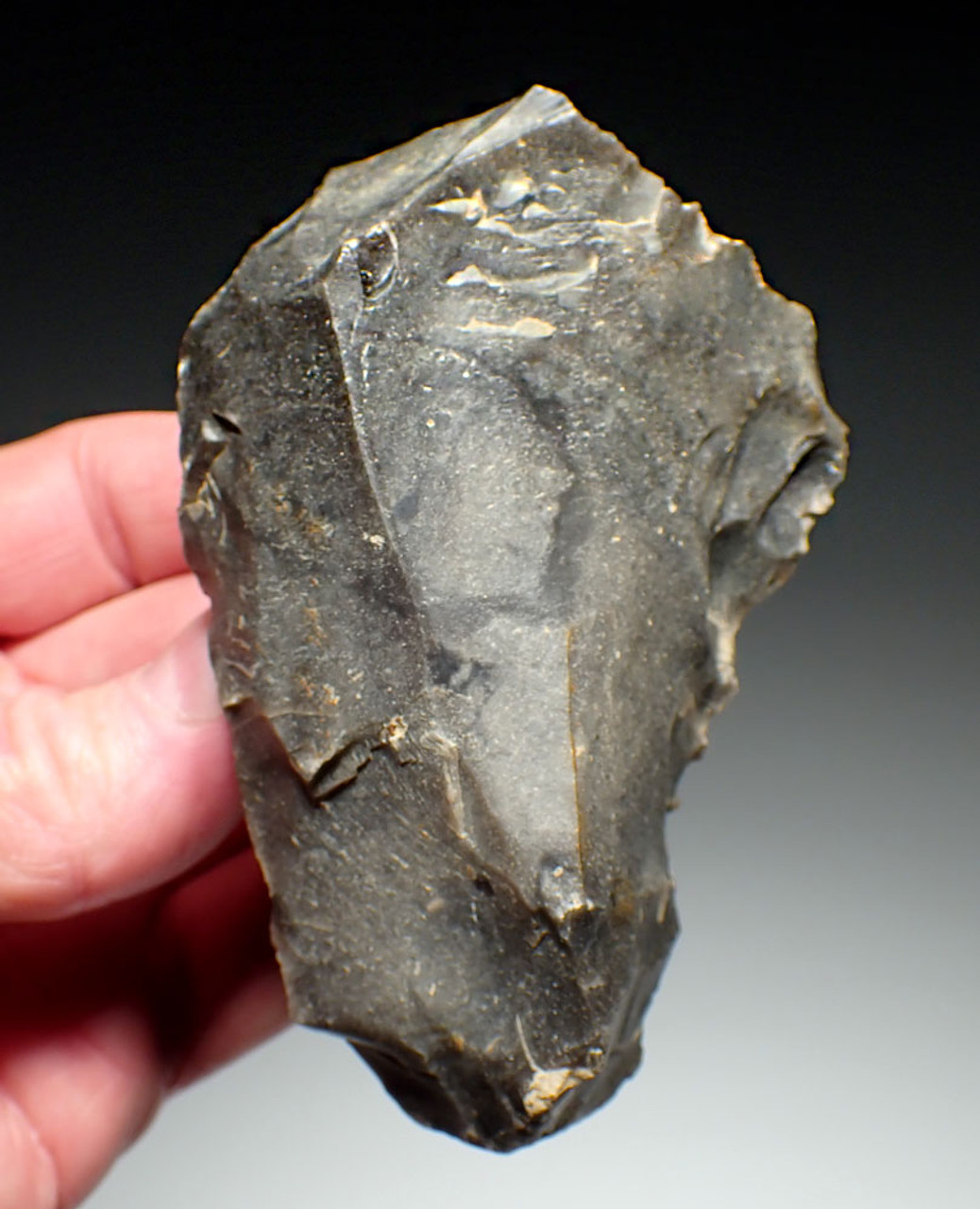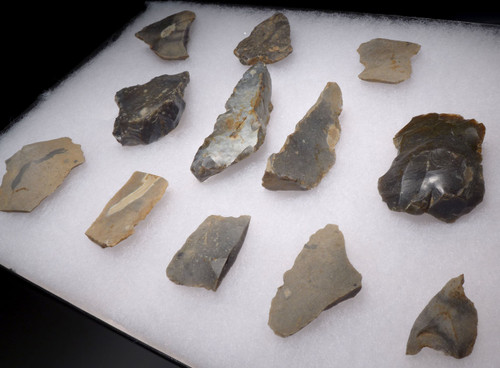Product Description
SEE MORE EUROPEAN NEOLITHIC TOOLS
This Neolithic flint flake tool and complete tool core were collected from the world famous Neolithic flint tool production and ancient mining site of Rijckholt - St. Geertruid, in the Netherlands. First discovered in 1881 and excavated extensively into the early 1970's, numerous underground Neolithic mining shafts were found, along with thousands of tools, some animal bones and even a human skull. Radiocarbon dating of charcoal finds showed a date range from 4315 - 4040 BC but mining is believed to have continued there until 3400 BC, or even into 2650 BC.
Both the flint flake scraper and tool core were collected by us on site in 2003, with the landowner's permission. The side scraper and flake tool core are both complete with none of the typical farm plow damage or breakage often seen in flint artifacts from sites like this. Both come from the Michelsberg Culture of the Middle Neolithic. These artifacts were made from flint mined at the site, and subsequently knapped into a flake tools by the ancient inhabitants of the Michelsberg Culture, who worked and lived near the region. This is an excellent specimen set from an important part of human history, and from a prominent Neolithic site in Europe. Michelsberg Culture Neolithic tools represent an important phase of the European Neolithic. FROM ONE OF EUROPE'S PRIMARY NEOLITHIC FLINT MINING SITES, AND THE MOST FAMOUS LOCATED IN THE NETHERLANDS FROM THIS PERIOD.
HISTORY
The Michelsberg Culture came from the Rhineland and Northern France between 6000 and 4800 years ago. These Neolithic farming peoples settled in parts of Belgium and the Netherlands. The name MICHELSBERG came from a site with a ceremonial enclosure discovered in the Rhine Valley and accompanied by a unique assemblage of settlement sites and material. The pottery of this culture is largely undecorated. The stone tools include very large examples (macrolithic) and polished flint axes. Around 6300 years ago, the Michelsberg Culture introduces extensive deep mining of flint and flint production expands to almost an "industrial" scale. This can be seen at the famous flint mines at Spiennes, Belgium.
 US DOLLAR
US DOLLAR
 EURO
EURO
 AUSTRALIAN DOLLAR
AUSTRALIAN DOLLAR
 CANADIAN DOLLAR
CANADIAN DOLLAR
 POUND STERLING
POUND STERLING






















